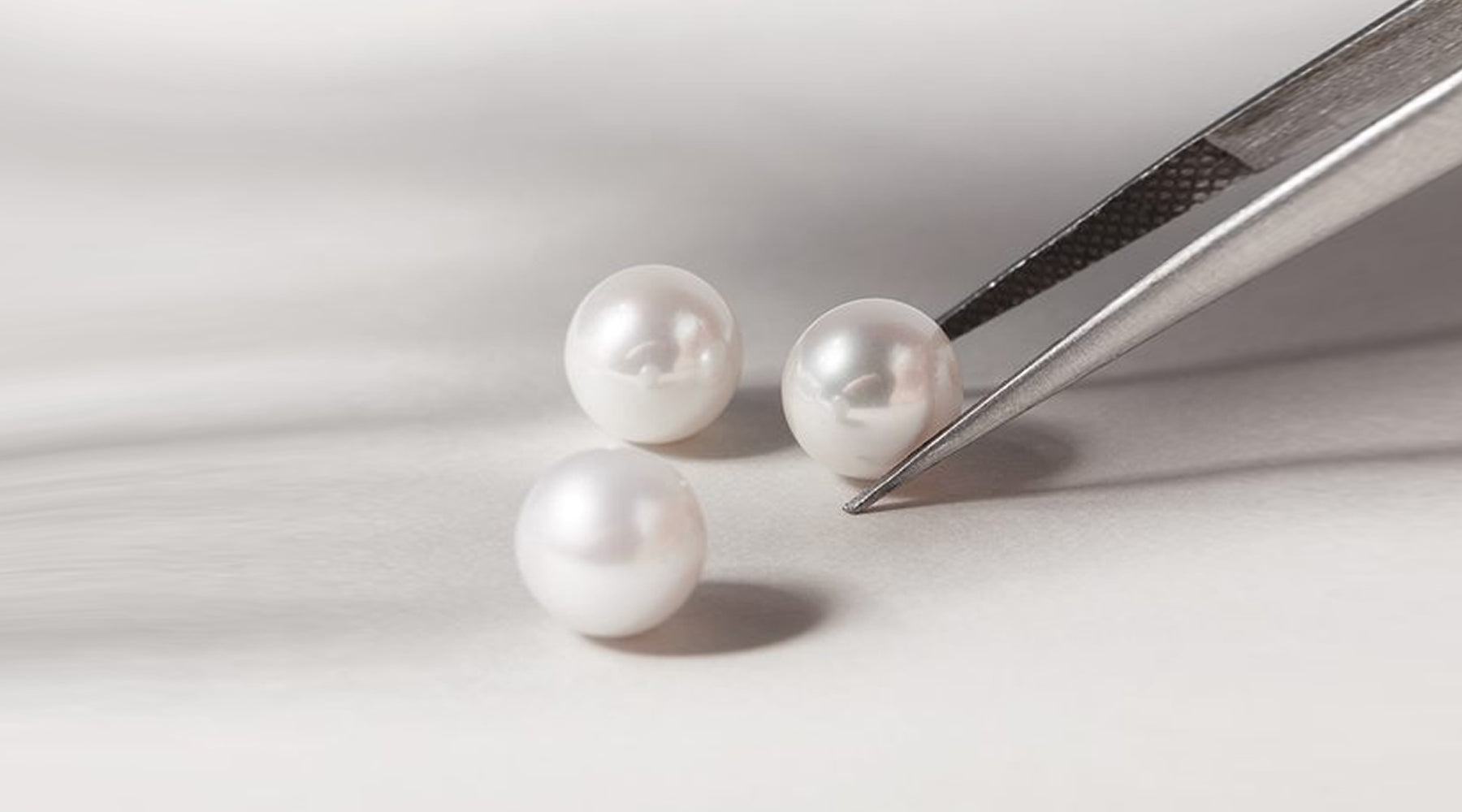Did you know pearls have a grading system?
Yes, that’s right. Pearls have a checklist to determine their worth and popularity!
However, there’s a bit of confusion regarding grading pearls: there’s no standard way to do it! Farmers, vendors, and even the ones responsible for processing the pearls have their own grading systems.
In other words, what may be a high-quality pearl to someone may be just above average for the other.
Amid all the confusion, the Gemological Institute of America’s Pearl Description System is the most widely accepted grading system.
And that’s what we’re going to talk about next.
GIA Pearl Grading System
The Gemological Institute of America, or GIA, is dedicated to researching gemstones and has a pearl valuation system known as The GIA 7 Pearl Value Factors.
These factors are luster, surface, nacre (nay-ker), size, shape, color, and matching! Let’s take a closer look at these valuation points that grant pearls their respective rankings.
1. Pearl Luster
A pearl’s luster is perhaps the most significant factor in determining how valuable and, therefore, how expensive it is.
Luster refers to the shine or glow of a pearl. If you come across jewelry with glistening pearls, chances are they’re pretty expensive!
For example, Akoya pearls are known for their ‘mirror-like’ luster; a person can see their whole face in the reflection of a lustrous Akoya pearl! That’s quite cool.
Pearl Luster is directly related to the nacre quality of the pearls. Smooth and even layers of nacre give the pearls a high luster; likewise, if the nacre isn’t smooth and layered unevenly, the pearl will not be as lustrous.
2. Surface Quality
This factor takes into account the blemishes found on a pearl’s surface. By blemishes, we mean abrasions, bumps, chalky spots, and wrinkles.
Since pearls are a natural occurrence, they come with little imperfections that can lower their value and, as a result, price point.
It comes down to the size, amount, and visibility of these blemishes on a pearl’s surface. According to GIA, the pearls with the slightest imperfections are graded ‘Clean.’
The other gradings are: Lightly spotted, moderately spotted, heavily spotted, and poor. A poor grade is given to the pearls with a dull surface.
3. Nacre (nay-ker)
We can’t evaluate a pearl’s worth without talking about nacre now, can we?
If you’re not familiar with the word, nacre is what makes these precious gemstones into, well, pearls. Layers upon layers of nacre are hardened to become what we all know as pearls.
The quality of the nacre also gives the pearls their reflection and iridescence. Not only that, but the nacre quality also determines the durability and longevity of a pearl.
Tahitian and South Sea pearls usually have thick nacre than the other pearl types, which partly explains why these two pearl types are pretty expensive.
If all other value factors are balanced, a pearl consisting of thicker nacre is precious and, therefore, pricey!
The three types of nacre quality are acceptable, nucleus visible, and chalky.
4. Pearl Size
The bigger the pearl, the more valuable it is! However, that’s only when all the other value factors are top-notch.
The largest pearls are found in Tahitian and South Sea pearl types, approximately 9mm to 11mm and beyond! You can probably spot them from afar; they’re meant to stand out and are often used in statement jewelry.
The other types, e.g., Akoya pearls, are smaller in size, which makes them perfect for earrings and dainty necklaces. These are the most common pearl type and are often used in jewelry!
The extra effort explains their higher price point and the time spent cultivating them.
4. Pearl Shape
Another crucial factor that decides the worth of a pearl is its shape!
Contrary to popular belief, pearls rarely come in perfectly round shapes; if they do, they’re sold at a high price. Akoya pearls are the most rounded of them, and that’s why jewelers love them the most.
Pearls come in approximately 7 shapes: round, near-round, oval, button, drop, semi-baroque and baroque!
Baroque pearls have an irregular shape and are the least popular of all pearl shapes. However, some baroque pearls could be priced high due to their unique structure.
Here at DezLin, Baroque pearls are one of our favorite shapes! They are so fun, unique, and make for quite the statement piece.
5. Color
The classic white pearls are the most popular of all colors. We’ve seen so many celebs and socialites wear them.
These are commonly found in Akoya pearls, but white isn’t all that a pearl color palette has to offer.
Pearls come in many colors and hues; Tahitian pearls come in exotic shades of deep blue and black, while South Sea pearls have the most stunning golden color ever!
The color of a pearl is graded on the body color and overtones.
6. Matching
Matching refers to the similarity between the different pearls used in a necklace or bracelet!
Since pearls are natural, they each have unique properties, and no two are exactly alike.
The more evenly matched each pearl is in a strand, the more valuable they are! According to GIA, this will be graded as ‘Excellent.’
Parting Thoughts
In a world with no standard grading system, the chances of you getting scammed by untrusted vendors are high.
Are you a beginner and don’t know where to shop for pearls? Check out DezLin.com! Here are a couple of links for you to get started:
Shop Pearls In A Shell
Shop Loose Pearls
We are a family and veteran-owned company from Lodi, California, specializing in product reveals containing many pearl jewelry options and colorful pearls hidden inside oysters! Why not give us a try?



